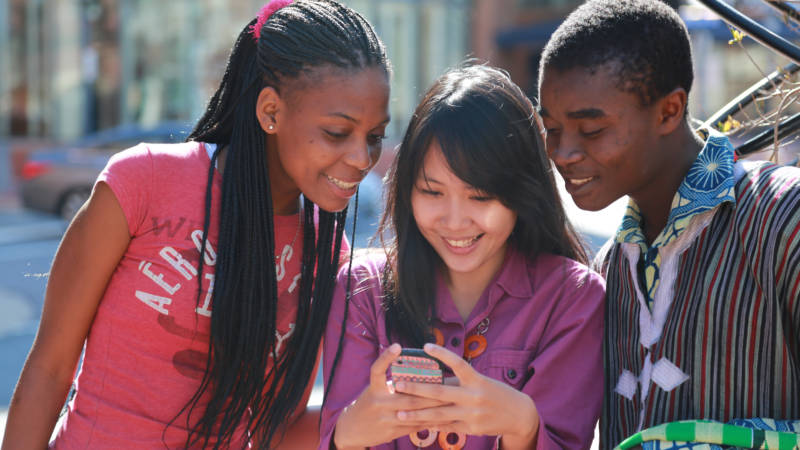In the past few weeks my media staff has covered live events with Snapchat, and an enterprising group of students at my school used the app as a portal for their psychology project “because that’s where everybody is.” There are lots of other assignments at school where a “practice platform” would come in handy.
For example recently my school had an Arts Day, and the high school media staff that I advise decided to cover the events in three ways: via print, a video package, and a Snapchat Story (a compilation of individual Snaps that create a narrative, appearing in chronological order with a beginning, middle and end).
My students’ Snapchat stories from our school’s arts day featured quick interviews, video of aspiring chefs and cupcake makers, knitters, ballroom dancers, birders with falcons, photographers working with a reflector, the poet laureate of our state giving student writers advice about “failing better.”
What separated Snapchat from the print and video package was its immediacy.
Probably the most captivating thing about Snapchat is its impermanence. It’s not designed to save photos and videos forever. Snaps only have your attention for an instant and then they’re gone. So like the event itself, Snaps are fleeting, ephemeral. Stories only exist for 24 hours.
One constraint of Snapchat is the viewing experience. At the end of the day when students shared their Snapchat stories, the rest of the media staff had to gather around individual phones. There are ways to get around this but for the most part Snaps are meant for individual consumption or for sharing in small groups. Some argue that because the default orientation is vertical video that’s another another constraint (although others disagree).
A consideration for educators is that up until now Snapchat has been used primarily for social purposes and rarely in academic settings. This means that if students “friend” a teacher, that teacher can see every snap the student shares. However this can also be said for all social media that’s been repurposed for school. There are a couple of options to deal with this.
When participating in KQED Do Now activities via Twitter, for example, some of my students elect to create another account so that they have one account for their friends and another for school. But this is less than ideal in my opinion. A better solution is to have a ongoing discussions with students about their overall social media presence. The more savvy teen social media users know that what they post can potentially have a much wider audience than what was originally intended, and they craft their original message with that in mind. They realize that nothing they post on social media is really private. After all, it’s called “World Wide Web” for a reason. No matter who the original audience, “private” tweets between friends can get retweeted, Snaps can be saved and shared.
Despite these constraints and concerns, Snapchat can be used for educational purposes. It seems particularly adapted to situations that call for repeated attempts at solving problems (math classes, science experiments, maker spaces). In situations where students might like practicing more privately before publishing/performing in public forums (like Do Now responses and performing arts classrooms).
What makes Snapchat potentially effective for some school settings is that users pay attention because of its ephemeral nature. By its very nature it’s timely and can facilitate continuing conversations about current events. And with over 100 million users, odds are pretty good your students won’t have to spend much time learning the interface. Heck, you can be pretty sure they’re already using it.
